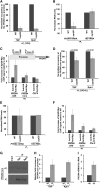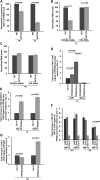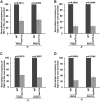Two Distinct Regulatory Mechanisms of Transcriptional Initiation in Response to Nutrient Signaling
- PMID: 29141908
- PMCID: PMC5753858
- DOI: 10.1534/genetics.117.300518
Two Distinct Regulatory Mechanisms of Transcriptional Initiation in Response to Nutrient Signaling
Abstract
SAGA (Spt-Ada-Gcn5-Acetyltransferase) and TFIID (transcription factor IID) have been previously shown to facilitate the formation of the PIC (pre-initiation complex) at the promoters of two distinct sets of genes. Here, we demonstrate that TFIID and SAGA differentially participate in the stimulation of PIC formation (and hence transcriptional initiation) at the promoter of PHO84, a gene for the high-affinity inorganic phosphate (Pi) transporter for crucial cellular functions, in response to nutrient signaling. We show that transcriptional initiation of PHO84 occurs predominantly in a TFIID-dependent manner in the absence of Pi in the growth medium. Such TFIID dependency is mediated via the NuA4 (nucleosome acetyltransferase of H4) histone acetyltransferase (HAT). Intriguingly, transcriptional initiation of PHO84 also occurs in the presence of Pi in the growth medium, predominantly via the SAGA complex, but independently of NuA4 HAT. Thus, Pi in the growth medium switches transcriptional initiation of PHO84 from NuA4-TFIID to SAGA dependency. Further, we find that both NuA4-TFIID- and SAGA-dependent transcriptional initiations of PHO84 are facilitated by the 19S proteasome subcomplex or regulatory particle (RP) via enhanced recruitment of the coactivators SAGA and NuA4 HAT, which promote TFIID-independent and -dependent PIC formation for transcriptional initiation, respectively. NuA4 HAT does not regulate activator binding to PHO84, but rather facilitates PIC formation for transcriptional initiation in the absence of Pi in the growth medium. On the other hand, SAGA promotes activator recruitment to PHO84 for transcriptional initiation in the growth medium containing Pi. Collectively, our results demonstrate two distinct stimulatory pathways for PIC formation (and hence transcriptional initiation) at PHO84 by TFIID, SAGA, NuA4, and 19S RP in the presence and absence of an essential nutrient, Pi, in the growth media, thus providing new regulatory mechanisms of transcriptional initiation in response to nutrient signaling.
Keywords: 19S RP; NuA4; SAGA; TFIID; transcription.
Copyright © 2018 by the Genetics Society of America.
Figures







Similar articles
-
UPS writes a new saga of SAGA.Biochim Biophys Acta Gene Regul Mech. 2023 Dec;1866(4):194981. doi: 10.1016/j.bbagrm.2023.194981. Epub 2023 Aug 30. Biochim Biophys Acta Gene Regul Mech. 2023. PMID: 37657588 Free PMC article. Review.
-
TOR Facilitates the Targeting of the 19S Proteasome Subcomplex To Enhance Transcription Complex Assembly at the Promoters of the Ribosomal Protein Genes.Mol Cell Biol. 2018 Jun 28;38(14):e00469-17. doi: 10.1128/MCB.00469-17. Print 2018 Jul 15. Mol Cell Biol. 2018. PMID: 29712756 Free PMC article.
-
The 19S proteasome subcomplex promotes the targeting of NuA4 HAT to the promoters of ribosomal protein genes to facilitate the recruitment of TFIID for transcriptional initiation in vivo.Nucleic Acids Res. 2012 Mar;40(5):1969-83. doi: 10.1093/nar/gkr977. Epub 2011 Nov 15. Nucleic Acids Res. 2012. PMID: 22086954 Free PMC article.
-
Eaf1p Is Required for Recruitment of NuA4 in Targeting TFIID to the Promoters of the Ribosomal Protein Genes for Transcriptional Initiation In Vivo.Mol Cell Biol. 2015 Sep 1;35(17):2947-64. doi: 10.1128/MCB.01524-14. Epub 2015 Jun 22. Mol Cell Biol. 2015. PMID: 26100014 Free PMC article.
-
Distinct regulatory mechanisms of eukaryotic transcriptional activation by SAGA and TFIID.Biochim Biophys Acta. 2011 Feb;1809(2):97-108. doi: 10.1016/j.bbagrm.2010.08.009. Epub 2010 Aug 26. Biochim Biophys Acta. 2011. PMID: 20800707 Free PMC article. Review.
Cited by
-
Mechanisms of Antisense Transcription Initiation with Implications in Gene Expression, Genomic Integrity and Disease Pathogenesis.Noncoding RNA. 2019 Jan 21;5(1):11. doi: 10.3390/ncrna5010011. Noncoding RNA. 2019. PMID: 30669611 Free PMC article. Review.
-
UPS writes a new saga of SAGA.Biochim Biophys Acta Gene Regul Mech. 2023 Dec;1866(4):194981. doi: 10.1016/j.bbagrm.2023.194981. Epub 2023 Aug 30. Biochim Biophys Acta Gene Regul Mech. 2023. PMID: 37657588 Free PMC article. Review.
-
TOR Facilitates the Targeting of the 19S Proteasome Subcomplex To Enhance Transcription Complex Assembly at the Promoters of the Ribosomal Protein Genes.Mol Cell Biol. 2018 Jun 28;38(14):e00469-17. doi: 10.1128/MCB.00469-17. Print 2018 Jul 15. Mol Cell Biol. 2018. PMID: 29712756 Free PMC article.
-
Requirements for RNA polymerase II preinitiation complex formation in vivo.Elife. 2019 Jan 25;8:e43654. doi: 10.7554/eLife.43654. Elife. 2019. PMID: 30681409 Free PMC article.
-
Genome-Wide Regulations of the Preinitiation Complex Formation and Elongating RNA Polymerase II by an E3 Ubiquitin Ligase, San1.Mol Cell Biol. 2022 Jan 20;42(1):e0036821. doi: 10.1128/MCB.00368-21. Epub 2021 Oct 18. Mol Cell Biol. 2022. PMID: 34661445 Free PMC article.
References
-
- Bevington A., Kemp G. J., Graham R., Russell G., 1992. Phosphate-sensitive enzymes: possible molecular basis for cellular disorders of phosphate metabolism. Clin. Chem. Enzym. Comms. 4: 235–257.
Publication types
MeSH terms
Substances
Grants and funding
LinkOut - more resources
Full Text Sources
Other Literature Sources
Medical
Research Materials
Miscellaneous

